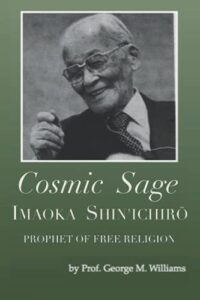
Cosmic Sage: Imaoka Shin’ichirō, Prophet of Free Religion
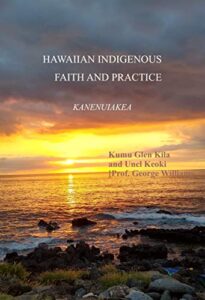
Hawaiian Indigenous Faith and Practice: Kanenuiakea
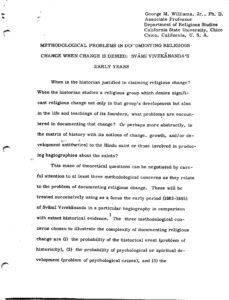
Methodological Problems When Documenting Religious Change When Change is Denied:...
The article discusses the methodological problems in documenting religious change when change is denied, using the early years of Swami Vivekananda as a case study. The author explores the challenges faced by historians when studying religious groups that deny significant change in their development and the life and teachings of their founders. The article examines the historical events, psychological or spiritual development, and patterns of belief and practice in order to shed light on the complexities of documenting religious change. The author argues that hagiographies of Swami Vivekananda have portrayed his life in an archetype of the spiritual hero, but...
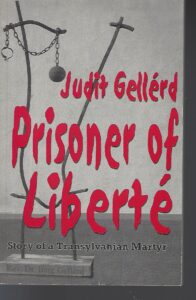
Prisoner of Liberté
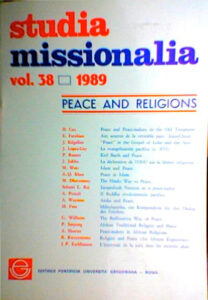
The Bodhisattva Way of Peace
This article explores Lay Buddhism's journey over two millennia and its role in peacemaking, arguing that such work isn't an afterthought but an integral part of its belief system. It discusses the transition of Buddhism into a more modern form, liberalizing religious symbols and entering what is known as Bellah's fifth stage of religious development.
The piece further examines the 'Bodhisattva way,' positing that anyone, given their inherent buddha-nature, can become a bodhisattva, promoting equality and fostering liberation from suffering through peaceful actions. Niwano's quote at a UN Symposium underscores the continuous evolution of humanity and the rising importance of...

The Quest for Meaning of Svāmī Vivekānanda
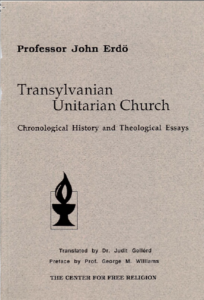
Transylvanian Unitarian Church. Chronological History and Theological Essays
This book is a compilation of works addressing the Unitarianism in Transylvania during the tumultuous period under Ceausescu's regime. Sourced predominantly from previously published Hungarian materials to ensure safety for Prof. John Erdo, the writer, this collection sheds light on the survival of Transylvanian Unitarianism amidst intense state-led persecution. These...
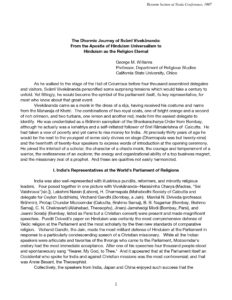
Vivekananda – Apostle of Hindu Universalism
The article discusses the journey of Swami Vivekananda and his role at the World's Parliament of Religions. It describes his unique combination of qualities including his role as a monk, scholar, warrior, explorer, and missionary. The article also explores the different perspectives of Vivekananda's participation in the Parliament, with some seeing him as a minor participant and others viewing him as a symbol of the event. The author examines Vivekananda's mission to defend and reform Hinduism and how his defense of idealized Hinduism overshadowed his efforts at reform. The article concludes by discussing Vivekananda's use of four different concepts to...
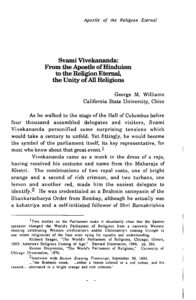
Vivekananda – Apostle of Hinduism, Religion Eternal
Svami Vivekananda, a key representative of the Parliament of the World's Religions in 1893, stood as a symbol of tensions that would unravel over the century. Dressed in royal garb gifted by the Maharaja of Khetri and representing a Brahmin sannyasin from Bombay, he embodied a unique blend of...
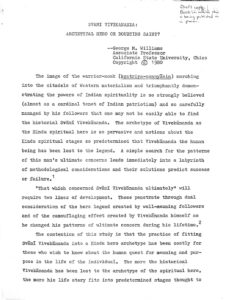
Vivekananda – Archetypal Hero or Doubting Saint
Despite adhering to ancient teachings, Vivekananda's novel contribution lies in the application of these principles to solve social problems, offering a practical Vedanta approach. He promoted liberation from suffering through knowledge of one's true nature as the Unmanifested and encouraged action in the world without selfish motives for the benefit of all beings. He foresaw a future where the principles of Vedanta would revolutionize society, and everyone would grow according to their own nature, realizing their divinity.
Vivekananda's teachings stressed the unity of existence, pushing for liberation from dualistic customs and superstitions, which he believed would lead to a harmonious...